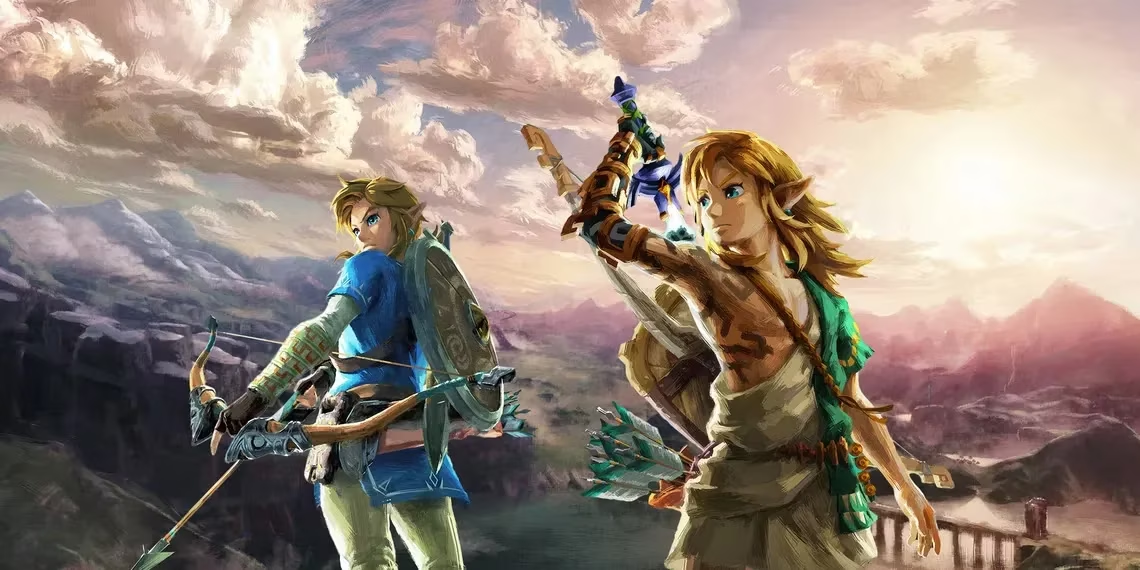When The Legend of Zelda: Breath of the Wild launched in 2017, it fundamentally reshaped open-world design. Nintendo transformed Hyrule into a physics-driven playground where climbing, gliding, and environmental experimentation took center stage. Yet for every boundary BOTW pushed, other giants like Red Dead Redemption 2, Elden Ring, and The Witcher 3 carved their own specialties. These titles didn't just match Hyrule's ambition—they surpassed it in narrative depth, living ecosystems, and mechanical complexity, proving there's more than one path to open-world greatness.
Storytelling: The Witcher 3's Emotional Gut-Punches
While BOTW scattered its lore through fragmented memories, The Witcher 3 crafted morally complex sagas where choices echoed across its world. Quests like the Bloody Baron evolved from simple fetch tasks into harrowing explorations of family trauma, forcing players into impossible decisions with lasting consequences. CD Projekt Red layered every side mission with character depth rarely seen in the genre. By contrast, BOTW's minimalist approach prioritized environmental storytelling, leaving emotional weight largely optional. Hyrule whispered its history; Novigrad shouted its humanity.

Living Worlds: Red Dead Redemption 2's Breathing Frontier
Arthur Morgan’s world reacted to every choice: his beard grew, horses developed bonds, and weapons rusted without maintenance. NPCs lived independent lives—holding grudges, working jobs, and remembering insults. Animals hunted realistically, carcasses decaying over days. This relentless attention to systemic detail made RDR2 feel less like a playground and more like a simulated ecosystem. BOTW’s charm lay in its serene loneliness, where NPCs served primarily as quest-givers against nature-reclaimed ruins. Both philosophies resonate, but Rockstar’s obsessive simulation created unparalleled immersion.
Combat Systems: Elden Ring's Arsenal Versus BOTW's Physics
Elden Ring offered staggering build diversity: 300+ weapons, customizable Ashes of War, and deep magic systems allowing endless combat experimentation. Respec mechanics encouraged total playstyle reinvention mid-game. BOTW countered with brilliant environmental creativity—lightning strikes on metal weapons 🔥, fire-created updrafts 🌪️, and elemental chemistry. But its shallow RPG mechanics (hearts/stamina only) and fragile weapons prevented specialization. FromSoftware rewarded mastery; Nintendo prioritized improvisation.
Innovation: Death Stranding's Social Wilderness
BOTW refined open-world conventions through systemic interaction, but Death Stranding introduced an entirely new genre vocabulary. Kojima redefined traversal as core gameplay—balancing cargo across haunted terrain became a tense, physics-driven puzzle. Its revolutionary Social Strand System let players anonymously share structures (bridges, shelters) that manifested across worlds. Unlike BOTW’s solitary journey, Death Stranding made every player a trailblazer for unseen travelers, creating a paradigm shift where connectivity equaled survival.
| Feature | BOTW | Competitors |
|---|---|---|
| Customization | Functional armor sets | Odyssey's build-crafting |
| Side Quests | Shrines/Korok seeds | Fallout 4's narrative arcs |
| Replay Value | Self-imposed challenges | Skyrim's faction systems |
Role-Playing Freedom: Assassin's Creed Odyssey's Legend-Crafting
Odyssey delivered unparalleled character specialization: elaborate skill trees, gear engraving, and loot systems enabling game-breaking builds. Players could reinvent their mercenary’s playstyle hourly, bending combat to their will. BOTW’s armor upgrades (cold/heat resistance) served practical needs but lacked transformational depth. Link remained the same hero throughout; Kassandra could evolve from assassin to warrior to sorcerer.
Side Content: Fallout 4's Wasteland Legacy
Hyrule’s 120 shrines and 900 Korok seeds rewarded exploration mastery yet rarely changed the world. Fallout 4 embedded narrative gems like the Silver Shroud questline—donning a vigilante persona altered dialogues and outcomes. Settlement building let players physically reshape the Commonwealth, creating lasting environmental impact. Both celebrated discovery, but Bethesda gave players agency to leave permanent marks on their sandbox.
Replayability: Skyrim's Endless Reinvention
Skyrim’s faction system (Dark Brotherhood, College of Winterhold) enabled entirely unique playthroughs—a thief one game, a mage the next. Joinable factions with exclusive storylines created narrative branches BOTW couldn’t match. While Link’s path to Ganon remained fixed, Skyrim treated Tamriel as a blank canvas for new allegiances. Bethesda prioritized role-playing reinvention; Nintendo championed environmental rediscovery.
FAQ
❓ Which game has deeper NPC interactions?
Red Dead Redemption 2’s characters live independent lives with routines and memories, while BOTW NPCs primarily facilitate quests.
❓ Does BOTW or Elden Ring offer better combat customization?
Elden Ring’s weapon/magic diversity and respec systems allow deeper specialization versus BOTW’s physics-driven improvisation.
❓ Can you alter game worlds like in Fallout 4?
No—BOTW’s world remains static outside quests, whereas Fallout 4 lets players rebuild settlements.
❓ Which title is most innovative?
Death Stranding’s Social Strand System introduced entirely new multiplayer concepts, whereas BOTW refined existing mechanics.
❓ Better for multiple playthroughs?
Skyrim’s faction choices create radically different narratives, while BOTW relies on player-imposed challenges.